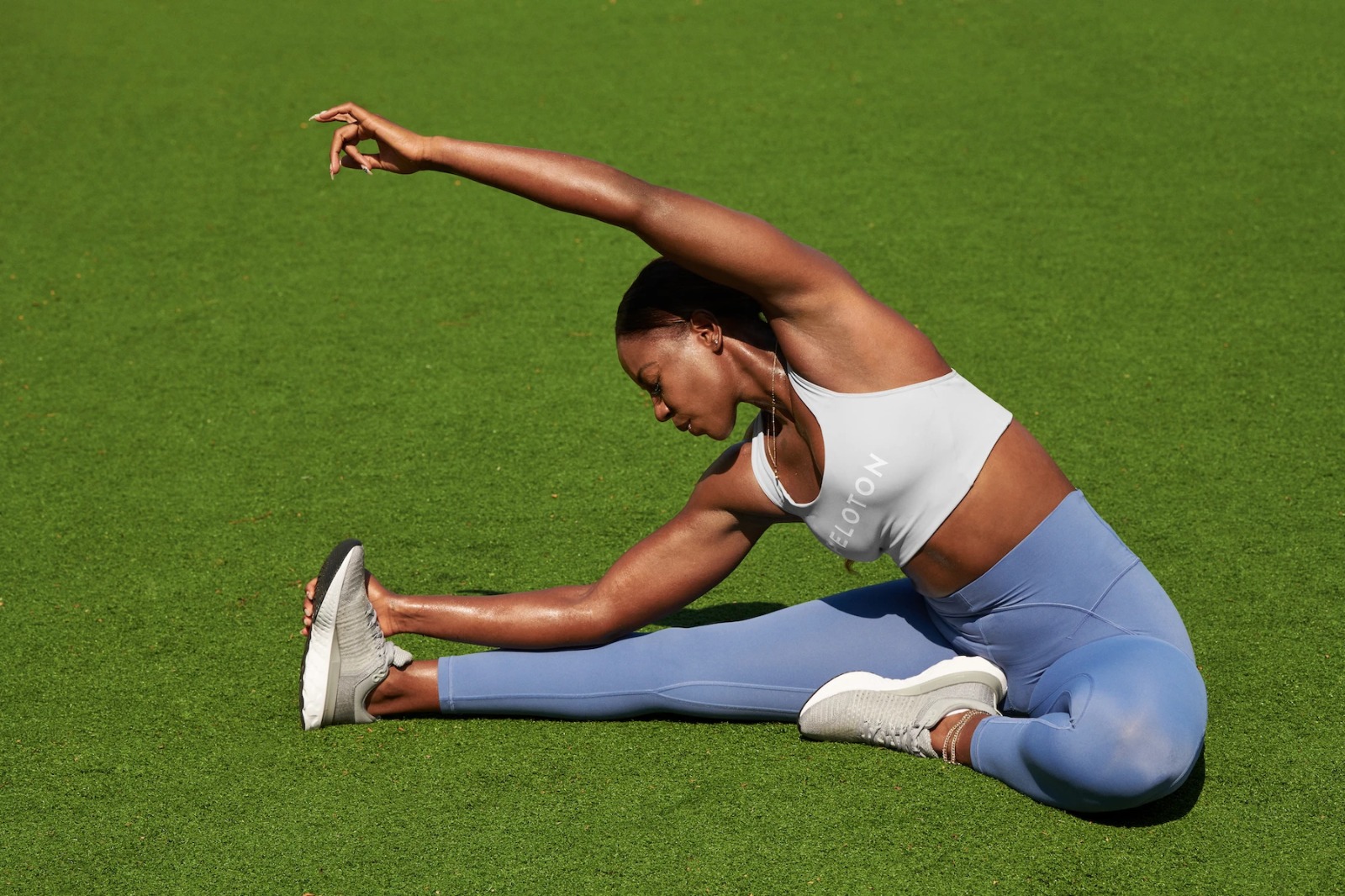
The Science of Recovery: Muscles Grow When You Rest, Not Train.
Muscle growth doesn’t happen in the gym—it happens when you rest. While training provides the stimulus, true strength, hypertrophy, and performance gains occur during recovery through sleep, nutrition, and active rest. Understanding the science of recovery, avoiding overtraining, and strategically balancing exercise with rest are essential for sustainable results, peak performance, and long-term health in any fitness journey.
💪 Fitness Guru
48 min read · 2, Oct 2025

Introduction
In the world of fitness and strength training, the prevailing mantra has often been “no pain, no gain.” Many gym-goers push themselves harder, believing that spending more hours lifting weights, running miles, or pushing through fatigue will bring faster results. But science paints a different picture: muscles don’t grow while you’re training—they grow while you rest. Training stimulates muscle breakdown, but recovery is where adaptation, repair, and growth occur. Without proper recovery, no amount of training will deliver the results you seek.
This article explores the science of muscle recovery, why rest is as crucial as training, how sleep, nutrition, and active recovery influence growth, and the practical strategies every athlete or fitness enthusiast should adopt to maximize results.
Understanding Muscle Growth: The Physiology of Recovery
When you exercise, especially during resistance training, you create microscopic tears in your muscle fibers. This process is called muscle damage. Although this might sound harmful, it is actually the trigger for growth.
Here’s what happens step by step:
- Training Stress – Intense exercise puts stress on muscle fibers, connective tissue, and energy systems. This includes eccentric (lengthening) contractions like lowering a heavy squat, which cause the most microtears.
- Inflammatory Response – The body sends signals to repair the damaged tissue. Inflammation increases blood flow, delivering nutrients, oxygen, and immune cells to the muscle.
- Repair and Adaptation – Satellite cells (muscle stem cells) fuse to damaged fibers, repairing them and making them stronger and thicker than before. This process is known as muscle protein synthesis (MPS).
- Supercompensation – With enough rest, muscles adapt beyond their previous state, preparing to handle more stress in the future. This is why progressive overload works.
But here’s the catch: this repair and adaptation doesn’t happen during your workout. It happens afterward, during recovery.
Training vs. Recovery: Breaking the Misconception
- Training = Stimulus
- Exercise is the signal to the body that it needs to adapt. Without training, there is no stimulus for growth. However, training alone without adequate recovery leads to fatigue, overtraining, and even muscle loss.
- Recovery = Growth
- Rest allows the body to replenish energy stores (glycogen), repair tissue, rebalance hormones, and rebuild stronger muscles. Without recovery, adaptation cannot occur.
In short: Training breaks you down, recovery builds you up.
The Role of Sleep in Muscle Growth
One of the most overlooked elements of recovery is sleep. During deep sleep, especially stages 3 and 4 of non-REM sleep, the body releases growth hormone (GH), which stimulates tissue repair and muscle growth.
- 7–9 hours of sleep is essential for most athletes.
- Poor sleep reduces testosterone, increases cortisol (a stress hormone), and impairs muscle protein synthesis.
- Sleep deprivation has been shown to decrease strength, slow recovery, and increase injury risk.
Thus, prioritizing quality sleep may be even more important than an extra training session.
Nutrition: Fueling Recovery
Recovery is not just about lying down—it’s about giving your body the right building blocks. Nutrition plays a vital role in muscle repair:
1. Protein – The Building Block
- Muscles are made of protein, and repairing them requires amino acids.
- Aim for 1.6–2.2 grams of protein per kg of body weight per day for optimal recovery.
- Best sources: lean meats, eggs, dairy, legumes, soy, whey protein.
2. Carbohydrates – Restoring Glycogen
- Training depletes glycogen stores in muscles.
- Carbs replenish glycogen, fueling your next workout.
- Whole grains, fruits, vegetables, and starchy foods are key.
3. Fats – Hormonal Balance
- Healthy fats (avocado, nuts, olive oil, fish) support hormone production, including testosterone and growth hormone, which are vital for recovery.
4. Hydration & Micronutrients
- Dehydration slows recovery.
- Electrolytes (sodium, potassium, magnesium) and micronutrients (zinc, vitamin D, omega-3s) all play roles in muscle repair and inflammation control.
Active vs. Passive Recovery
Recovery doesn’t always mean complete rest. There are two main approaches:
1. Passive Recovery
- Complete rest, sleep, relaxation.
- Useful after intense training or injury.
2. Active Recovery
- Low-intensity activity such as walking, light cycling, yoga, or swimming.
- Promotes blood flow, removes metabolic waste, reduces soreness, and speeds healing.
Both have their place, but active recovery often leads to faster long-term progress.
Overtraining: The Cost of Ignoring Recovery
When recovery is ignored, the body enters a state called overtraining syndrome (OTS). Symptoms include:
- Chronic fatigue
- Poor performance despite training harder
- Sleep disturbances
- Irritability, mood swings, depression
- Frequent injuries or illnesses
Overtraining does not equal discipline—it equals breakdown. Recovery prevents this destructive cycle and ensures sustainable growth.
The Science of Rest Days and Periodization
Professional athletes and top coaches emphasize rest days and periodization: structured training cycles that balance stress with recovery.
- Rest Days – At least 1–2 days per week with no intense training.
- Deload Weeks – Lighter training every 4–6 weeks to allow full recovery.
- Periodization – Alternating intensity, volume, and focus (strength, endurance, hypertrophy) to optimize adaptation without overtraining.
Without these strategies, even the best workout plan will eventually fail.
Recovery Tools and Methods
Modern athletes use various recovery techniques to enhance results:
- Stretching & Mobility Work – Prevents stiffness and improves range of motion.
- Foam Rolling & Massage – Reduces muscle tightness and improves circulation.
- Cold Therapy (Ice baths, cryotherapy) – Reduces inflammation, though research shows mixed results.
- Heat Therapy (Saunas, hot baths) – Improves blood flow and relaxation.
- Compression Garments – May aid circulation and reduce soreness.
- Mindfulness & Stress Management – Stress increases cortisol, which slows recovery. Meditation, deep breathing, and relaxation techniques help balance recovery.
The Psychological Aspect of Recovery
Recovery is not just physical—it’s mental. Training is a stressor, and recovery involves both body and mind. Athletes who prioritize rest experience:
- Improved focus and motivation
- Lower stress and anxiety
- Greater enjoyment of training
- Better long-term consistency
In other words, recovery isn’t a sign of weakness—it’s part of a smart, sustainable fitness strategy.
Practical Guidelines for Optimal Recovery
- Prioritize Sleep – 7–9 hours nightly, with consistent sleep-wake cycles.
- Eat for Recovery – High-quality protein, balanced carbs and fats, adequate hydration.
- Plan Rest Days – At least 1–2 per week.
- Use Active Recovery – Light movement, yoga, or stretching.
- Listen to Your Body – Persistent soreness, fatigue, or low motivation are signs you need more rest.
- Avoid Overtraining – Train smarter, not harder.
- Incorporate Recovery Modalities – Foam rolling, massages, stress management.
Muscle growth is often misunderstood in the fitness community because the prevailing belief has long been that the more you train, the faster your muscles will grow, but scientific evidence clearly shows that muscles do not actually grow during exercise; rather, they grow when you rest, as rest allows the complex physiological processes of repair and adaptation to occur, which are triggered by the stress and microscopic damage caused during training sessions, particularly resistance training, where eccentric movements, like lowering a heavy weight, create small tears in the muscle fibers, initiating an inflammatory response that signals the body to deliver blood, nutrients, and specialized cells known as satellite cells to the damaged tissue, where these cells fuse with muscle fibers to repair the damage and increase the size and strength of the muscles in a process called muscle protein synthesis, which is only possible when adequate recovery is provided, highlighting the crucial difference between training, which serves merely as the stimulus, and recovery, which is the actual growth phase, and this is why overtraining without proper rest can lead to chronic fatigue, poor performance, injuries, and hormonal imbalances, as excessive stress increases cortisol, decreases testosterone, and impairs the very repair processes that are necessary for hypertrophy, making rest days, deload weeks, and periodization strategies essential for anyone seeking sustainable strength and muscle gains, while sleep plays a central role in recovery because deep sleep stages are associated with peaks in growth hormone secretion, which enhances tissue repair, and chronic sleep deprivation not only blunts growth hormone release but also reduces immune function and muscle protein synthesis, thereby slowing recovery and increasing susceptibility to illness and injury, and nutrition cannot be overlooked because protein provides the amino acids required for rebuilding muscle tissue, carbohydrates replenish depleted glycogen stores that fuel future workouts, fats support hormone production including testosterone and growth hormone, and adequate hydration along with key micronutrients such as magnesium, zinc, and vitamin D facilitates enzymatic reactions and reduces inflammation, and recovery is not limited to passive rest; active recovery involving low-intensity activity like walking, swimming, cycling, or yoga promotes blood flow, enhances nutrient delivery, and removes metabolic waste from muscle tissue, which reduces soreness and accelerates the adaptation process, while tools such as foam rolling, massage, heat and cold therapy, and compression garments can further aid circulation, reduce muscle stiffness, and improve comfort during the recovery phase, and beyond the physical aspects, recovery has a psychological dimension because mental stress interferes with hormonal balance and sleep quality, so practices like meditation, mindfulness, and stress management indirectly support muscle repair by reducing cortisol levels and promoting relaxation, and strategically planning rest is equally critical, as professional athletes use periodization—systematic variation in training intensity, volume, and focus—combined with regular rest days to prevent overtraining, optimize performance, and ensure progressive overload without injury, and listening to one’s body is perhaps the simplest yet most powerful recovery strategy, as persistent soreness, decreased motivation, and poor performance are clear signs that the muscles and nervous system need additional rest, and understanding that the gym is only the stage for stimulus while true growth happens during recovery helps reframe the way we approach training, emphasizing quality over quantity, and prioritizing adequate sleep, balanced nutrition, stress management, and structured recovery protocols allows for sustainable muscle hypertrophy and long-term performance gains, while ignoring recovery leads not only to stalled progress but also to overuse injuries, mental burnout, and metabolic disturbances, making recovery not a luxury but a critical component of any fitness regimen, and finally, embracing the science of recovery transforms training from a cycle of relentless effort into a deliberate and strategic practice, where each workout is complemented by sufficient rest, optimal nutrition, and mental rejuvenation, ensuring that the microscopic damage inflicted during exercise is repaired efficiently, muscles are strengthened and thickened, energy stores are replenished, hormones are balanced, and the mind is refreshed, illustrating that the mantra “train hard, rest harder” is not just a catchy phrase but a physiological truth, because while training without recovery only breaks the body down, recovery without training provides the opportunity for adaptation, supercompensation, and true muscle growth, making it clear that the secret to strength, endurance, and hypertrophy lies not in how much time you spend lifting or pushing your limits, but in how effectively you allow your body to repair, rebuild, and grow stronger between sessions, and this principle applies to everyone from beginner lifters to elite athletes, emphasizing that the science of recovery is the cornerstone of all successful training programs and that understanding and respecting the balance between stimulus and rest is what ultimately drives muscular development, peak performance, and long-term health.
Muscle growth is a process that is widely misunderstood in the fitness world, where the common perception is that the more you train, the faster and bigger your muscles will grow, but in reality, muscles do not grow while you are exercising; instead, they grow during rest periods, because training serves only as a stimulus that creates microscopic damage to muscle fibers, especially during resistance or weight training exercises, where eccentric movements such as lowering a heavy weight or performing a slow push-up create small tears in the muscle tissue, initiating an inflammatory response in which the body sends blood, oxygen, nutrients, and specialized cells called satellite cells to the damaged fibers to repair them and ultimately increase their size and strength in a process called muscle protein synthesis, and this repair process requires adequate recovery time, highlighting the critical distinction between training, which breaks muscles down, and recovery, which builds them up, and yet many athletes and fitness enthusiasts fall into the trap of overtraining by continuously working out without rest, which leads to chronic fatigue, reduced performance, increased risk of injury, hormonal imbalances, and in severe cases, overtraining syndrome, characterized by symptoms such as persistent soreness, sleep disturbances, irritability, depression, and a plateau or decline in strength and endurance, and this is why recovery strategies such as planned rest days, deload weeks, and periodized training programs are essential, as they allow the body to fully adapt to the stress imposed by training, optimize performance, and prevent burnout, while sleep plays a particularly crucial role in this recovery process because during deep stages of non-REM sleep, the body releases growth hormone, which stimulates tissue repair and muscle growth, and inadequate sleep not only impairs growth hormone secretion but also increases cortisol levels, suppresses testosterone, diminishes muscle protein synthesis, reduces immune function, and slows recovery, thereby underscoring the importance of prioritizing quality sleep of seven to nine hours per night, alongside nutrition, which is equally vital for recovery, because protein supplies the amino acids necessary for repairing and building muscle fibers, carbohydrates replenish glycogen stores that fuel future workouts, fats support hormonal function including testosterone and growth hormone production, and hydration along with essential micronutrients such as magnesium, zinc, and vitamin D optimize enzymatic reactions and reduce inflammation, and recovery is not solely about passive rest, as active recovery methods, including light exercise such as walking, swimming, cycling, or yoga, can enhance circulation, promote nutrient delivery, remove metabolic waste, reduce soreness, and accelerate adaptation, and in addition, recovery tools such as foam rollers, massage, heat therapy, cold therapy, and compression garments can further improve blood flow, reduce muscle tightness, and promote relaxation, while the mental aspect of recovery is equally significant because chronic stress elevates cortisol levels, disrupts sleep, impairs motivation, and slows the physiological processes required for muscle repair, making stress management, meditation, and mindfulness practices important components of a comprehensive recovery strategy, and listening to your body is a simple yet critical tool, as persistent soreness, fatigue, decreased motivation, and declining performance are clear indicators that additional rest is required, and understanding that the gym is a place for stimulation, not growth, helps reframe training philosophy by emphasizing the importance of balance, so that athletes and fitness enthusiasts prioritize structured rest, nutrition, hydration, sleep, and stress management alongside their workouts, allowing the muscles to repair efficiently, thicken, strengthen, and prepare for subsequent training sessions, and by adopting scientifically supported recovery strategies, one can avoid the destructive effects of overtraining while promoting sustainable strength gains, improved endurance, better hormonal balance, and reduced injury risk, and recovery also enables supercompensation, a physiological phenomenon in which the muscles adapt beyond their previous capacity to handle future stress, thereby making every workout more effective over time, while ignoring recovery leads to cumulative fatigue, stalled progress, higher susceptibility to injury, mental burnout, metabolic disturbances, and decreased performance, proving that recovery is not a passive or optional part of training but rather the cornerstone of muscular development, athletic performance, and long-term health, and this principle applies universally, from beginners who are just starting their strength training journey to elite athletes preparing for high-level competition, and when rest, nutrition, sleep, and stress management are strategically integrated with exercise, the body can achieve maximum adaptation, repair muscle fibers, replenish energy stores, optimize hormone function, and ensure that each subsequent workout produces the greatest possible gains, thus demonstrating that the secret to building stronger, healthier muscles lies not in the quantity or intensity of workouts alone, but in how effectively one allows the body to recover, rebuild, and grow stronger between training sessions, and embracing recovery as an integral part of a fitness regimen transforms training from a cycle of relentless effort into a balanced and strategic practice where every action, including rest, sleep, nutrition, and stress management, contributes to long-term strength, hypertrophy, performance, and overall wellness, and ultimately underscores the simple but profound truth that muscles grow when you rest, not when you train, because while training creates the stimulus for adaptation, it is during rest that the complex processes of repair, protein synthesis, hormone regulation, energy replenishment, and mental rejuvenation converge to make the body stronger, healthier, and more resilient, making recovery not a luxury but an essential, scientifically proven component of all effective training programs and the key to achieving sustainable, long-term results in any fitness journey.
Conclusion
The science is clear: muscles don’t grow in the gym—they grow in recovery. Training breaks down muscle fibers, but it is rest, nutrition, and sleep that allow the body to rebuild stronger and bigger. Ignoring recovery leads to overtraining, poor performance, and injuries, while embracing it leads to sustainable progress, better health, and peak performance.
Athletes who understand this principle stop glorifying endless grind and instead embrace balance: intense training paired with deliberate recovery. After all, the real gains happen when you step away from the gym, not just when you’re in it.
Q&A Section
Q1 :- Why do muscles grow during rest and not during training?
Ans :- Training causes microscopic muscle damage, while rest allows muscle protein synthesis to repair and strengthen fibers, leading to growth.
Q2 :- How much sleep is needed for optimal recovery?
Ans :- Most people need 7–9 hours of quality sleep per night for proper recovery and hormone regulation.
Q3 :- Can I train every day without rest days?
Ans :- No. Without rest, the body risks overtraining, fatigue, and injury. At least 1–2 rest days per week are recommended.
Q4 :- Is active recovery better than passive recovery?
Ans :- Both have benefits. Active recovery promotes circulation and reduces soreness, while passive recovery is useful after intense sessions or injuries.
Q5 :- What role does nutrition play in muscle recovery?
Ans :- Nutrition provides the building blocks (protein for repair, carbs for glycogen, fats for hormones) that are essential for muscle growth during recovery.
Similar Articles
Find more relatable content in similar Articles

Training Your Fascia: The Forgotten Fitness Tissue...
"Discover the hidden power of .. Read More

Eco-Fitness: Training While Helping the Environment...
Eco-Fitness is a transformativ.. Read More

Glow From Within: Superfoods That Naturally Transform Your S..
Superfoods nourish the skin f.. Read More

The Science of Recovery: Muscles Grow When You Rest, Not Tra..
Muscle growth doesn’t happen i.. Read More
© 2024 Copyrights by rFitness. All Rights Reserved.